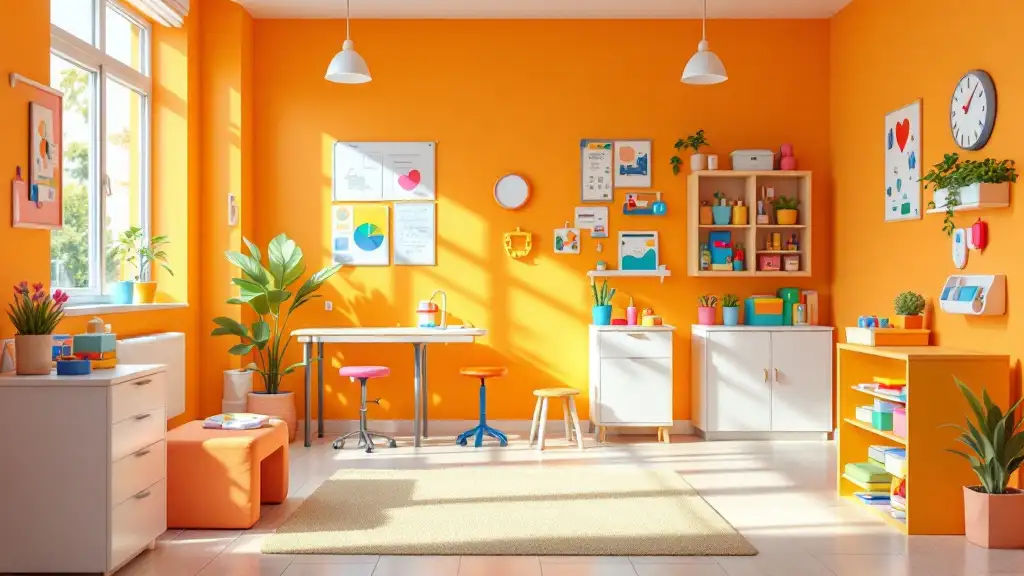Making Medical Visits Less Stressful for Children with Autism
Understanding the Importance of Preparation for Autistic Children
Preparing autistic children for medical appointments is essential to creating a positive healthcare experience that minimizes stress and anxiety. By implementing tailored strategies and using specific tools, caregivers can help children feel more comfortable and cooperative during visits, fostering a sense of safety and predictability.
Effective Preparation Strategies for Medical Appointments
 Preparing autistic children for medical visits requires thoughtful strategies to make the experience less stressful and more manageable. Visual supports such as social stories, visual schedules, and pre-visit walkthroughs are powerful tools. These aids help children understand what to expect by providing clear, visual step-by-step information about the appointment, reducing uncertainty and anxiety.
Preparing autistic children for medical visits requires thoughtful strategies to make the experience less stressful and more manageable. Visual supports such as social stories, visual schedules, and pre-visit walkthroughs are powerful tools. These aids help children understand what to expect by providing clear, visual step-by-step information about the appointment, reducing uncertainty and anxiety.
Role-playing at home with toy medical kits is another effective approach. Practicing activities like taking temperature, using a stethoscope, or examining teeth makes children more familiar with procedures, increasing their comfort and cooperation during the actual visit.
In addition, teaching relaxation techniques such as deep breathing and guided imagery can help children manage stress. These methods provide them with tools to self-soothe if they start feeling overwhelmed.
Bringing favorite toys, sensory objects, or noise-canceling headphones further supports emotional regulation by providing comfort and sensory regulation.
Effective communication and coordination with healthcare providers are crucial. Informing the medical team about the child's sensitivities, communication preferences, and specific needs ensures appropriate accommodations, like quieter rooms or additional time.
Scheduling appointments during less busy times, minimizing wait times, and ensuring the visit is at an optimal time of day can significantly reduce sensory overload.
Post-visit rewards or praise encourage positive associations with medical care. Combining these strategies fosters a confident, less anxiety-inducing environment that can help children develop healthy attitudes toward healthcare from a young age.
Below is a summary table of these preparation approaches:
| Strategy | Description | Benefits |
|---|---|---|
| Visual Supports | Use of social stories, visual schedules, and walkthroughs | Clarifies expectations, reduces fear |
| Role-Playing | Practice procedures with toy kits at home | Familiarizes child, increases cooperation |
| Relaxation Techniques | Deep breathing, guided imagery | Manages anxiety, promotes calm |
| Sensory Supports | Comfort items, noise-canceling headphones | Provides regulation and familiarity |
| Communication | Inform healthcare team about preferences | Enables tailored care and accommodations |
| Appointment Timing | Schedule at less busy times | Decreases sensory overload |
| Reinforcers | Use of rewards after visits | Promotes positive behavior and cooperation |
Using a comprehensive approach that combines visual supports, role-playing, relaxation methods, and effective communication can significantly improve medical appointment experiences for autistic children, promoting their health and well-being.
Creating a Child-Friendly Medical Environment
 Preparing children with autism for medical visits involves several thoughtful strategies to make the experience as comfortable and manageable as possible.
Preparing children with autism for medical visits involves several thoughtful strategies to make the experience as comfortable and manageable as possible.
One effective approach is to involve child life specialists. These professionals support children through medical procedures using developmentally appropriate techniques tailored to each child's needs. They can help make procedures less intimidating and provide comfort through distraction, explanation, or calming activities.
Familiarizing children with the medical environment beforehand can significantly reduce anxiety. This can be achieved by organizing pre-visit tours, showing pictures or videos of the clinic, and practicing procedures like using a thermometer or flashlight at home. Visual supports such as social stories—customized books with pictures and simple text explaining what to expect—are also useful. Creating a schedule board with photos, drawings, or written steps helps children understand the visit process, easing fears of the unknown.
Additionally, scheduling appointments during quieter times of the day minimizes sensory overload and waiting-related stress. Choosing early mornings or specific appointment slots with minimal waiting helps the child remain calmer. Arranging these visits at times when the clinic is less busy reduces disruptions and provides a more predictable environment.
Bringing comfort items like favorite toys, blankets, or noise-canceling headphones offers familiarity and sensory comfort. Distraction tools such as electronic devices, books, or sensory toys can divert attention from stressors during procedures.
When planning the visit, informing healthcare providers about the child's diagnosis, sensitivities, and communication preferences allows them to tailor their approach. Adjustments such as simplified language, shorter procedures, or environmental modifications like dimmed lights can foster a more inclusive setting.
In summary, integrating the support of child life specialists, pre-visit familiarization, sensory accommodations, and strategic scheduling creates a more welcoming environment for children with autism, leading to less stress and more positive healthcare experiences.
Reducing Anxiety Through Resources and Environmental Adjustments
 Helping autistic children feel more comfortable during medical visits often involves using specific resources and making environmental adjustments.
Helping autistic children feel more comfortable during medical visits often involves using specific resources and making environmental adjustments.
Visual supports such as social stories, visual schedules, and picture-based explanations play a vital role. These tools help children understand what will happen, what to expect, and how to behave, reducing feelings of uncertainty. Creating a visual story about the visit using pictures or social storybooks can prepare the child in a gentle, predictable way.
Distraction techniques and sensory tools are also beneficial. Bringing favorite toys, calming objects, or tactile items can provide a sense of familiarity and security. Noise-canceling headphones, weighted blankets, or sensory toys can help manage sensory overload, which is common in autistic children.
Scheduling appointments during times that are naturally less stressful helps reduce overall anxiety. Early morning or late afternoon slots, when the office is quieter, can be ideal. It’s also helpful to minimize wait times by scheduling visits at optimal times and arriving early to avoid rushing.
In addition to these strategies, working closely with healthcare providers to create an individualized plan makes a significant difference. Environmental modifications, like dimmed lights, quieter rooms, or the presence of familiar objects, make the environment more accommodating.
Preparation is crucial. Informing medical staff ahead of time about the child's needs and sharing a behavior support plan can facilitate a smoother experience. Bringing communication devices, using calming techniques such as deep breathing, and offering rewards for cooperation further support a positive visit.
By combining helpful resources with environmental modifications, medical visits become less stressful, supporting the child's well-being and fostering a more positive healthcare experience.
Making Medical Visits More Autism-Friendly
 Preparing autistic children for medical appointments involves thoughtful strategies to reduce anxiety and create a positive experience.
Preparing autistic children for medical appointments involves thoughtful strategies to reduce anxiety and create a positive experience.
First, caregivers should use visual supports such as social stories and visual schedules. These tools help children understand what to expect during the visit, reducing uncertainty and fear. Role-playing at home with toy doctor kits or using pictures of the medical facility can familiarize children with the environment.
Environmental modifications are also beneficial. Adjusting lighting to be softer and reducing noise levels can prevent sensory overload. Bringing in favorite toys, comfort blankets, or noise-canceling headphones provides familiarity and calming sensory input.
Clear communication is vital. Using simple, direct language, combining verbal explanations with visual aids, helps children grasp procedures and expectations. Asking yes/no questions allows children to express their comfort levels or needs for breaks.
Advocacy for accommodations is important. This can include longer appointment times, access to sensory tools, and support from child life specialists, who use age-appropriate methods to ease procedures.
Additional tips include arriving early, scheduling at less busy times, and bringing reinforcing items like stickers or preferred activities. After visits, positive reinforcement helps children develop healthy associations with medical care.
By integrating visual tools, sensory modifications, and straightforward communication, caregivers and healthcare providers can make medical visits less stressful and more supportive for children on the autism spectrum.
| Preparation Strategies | Environmental Modifications | Communication Tips |
|---|---|---|
| Social stories, visual schedules | Dimmed lighting, noise reduction | Simple language, visual aids |
| Role-playing with toy kits | Comfort items, sensory tools | Yes/no questions, visual supports |
| Pre-visit familiarization | Short appointment slots | Encouraging questions and feedback |
Supporting Children During Medical Procedures
What are effective techniques to help autistic children cope with medical appointments?
Helping autistic children manage the stress of medical visits involves a combination of preparation, visual supports, familiarization, and calming strategies. Using visual supports such as social stories that visually outline what will happen during the appointment can significantly reduce anxiety. These stories, often tailored with pictures and simple words, help children understand upcoming procedures and create a sense of predictability.
Pre-visit familiarization activities are also beneficial. Visiting the clinic beforehand or role-playing using toy doctor kits allow children to experience the environment and typical procedures, decreasing fear and resistance during the real visit.
Scheduling appointments at optimal times, such as early in the day or when the clinic is less crowded, minimizes wait times and sensory overload. Bringing favorite toys, comfort items like blankets, and sensory tools like noise-canceling headphones can provide comfort and a sense of safety.
During the appointment, techniques like deep breathing, guided imagery, and the use of distraction objects (toys, books, electronic devices) help children relax. Some children benefit from communication devices like picture boards or tablets to express their needs and feelings, especially when stress hampers speech.
Collaboration with the healthcare team to develop a personalized behavior support plan ensures that accommodations are in place—such as dimmed lighting, a quiet room, or extra time—that make the experience more manageable.
Post-visit, offering rewards or engaging in preferred fun activities can reinforce positive behavior and motivate cooperation in future visits. Overall, these strategies foster a more comfortable, predictable, and supportive environment for children with autism during medical procedures.
Creating a Supportive and Positive Healthcare Experience
By combining preparation, environmental modifications, visual supports, and collaboration with healthcare providers, caregivers can significantly enhance the experience of medical appointments for children with autism. These strategies help reduce anxiety, improve cooperation, and foster positive associations with healthcare that can benefit children throughout their lives. Establishing routines, offering reassurance, and ensuring accessible communication form the foundation of an autism-friendly medical environment, making visits less daunting and more productive for everyone involved.
References
- Autism and doctor visits
- Preparing for a Medical Appointment for Autism Spectrum ...
- Visiting the Doctor—Autism Toolkit
- 7 Strategies to Help Autistic and Special Needs Kids ...
- Preparing Your Child with Autism for a Doctor's Visit
- Prepare your child for a visit to the doctor
- Making Doctors' Appointments Autism-Friendly






